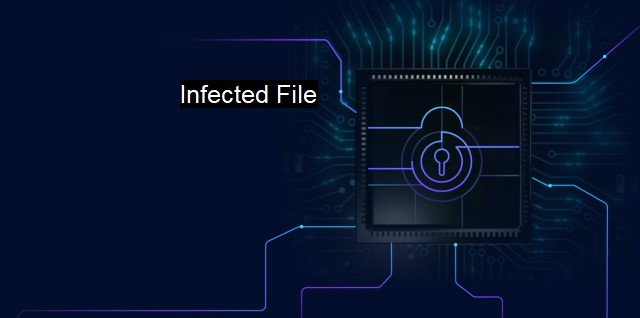What is Infected File?
Understanding Infected Files and How to Protect Against Malware: A Guide to Cybersecurity and Antivirus
An "infected file" is a term commonly used to denote a type of a malicious file that has been contaminated or compromised with malicious software or cyber threats, more commonly termed as malware. This comprises different types of malicious programming, such as a computer virus, trojen horse, worm, ransomware, spyware, adware, etc. These malware breeds inherent in an infected file can harm a computer system, its operations, stored information, and overall cyber security to varying degrees, depending on their potency.One salient aspect distinguishing an infected file from a regular file is its inherent capability to potentially harm a system, subtly or overtly. Upon being run in a system, it triggers its malicious payload, initiating varying degrees of detrimental processes. Usually, a victim unknowingly downloads or runs the file, leading to the launching of the malware’s devised provisions embedded in the file.
Infection mechanisms can vary extensively, largely dependent on the severity, complexity of the malware strain and the targeted vulnerability in the system. In some cases, a virus-infected file could automatically replicate itself silently by inserting its code into other legitimate files. Worm-infected files, on the other hand, might proliferate by exploiting network vulnerabilities. More nefarious designs such as a trojen may use the file as a conduit to incorporate a backdoor in the system, thereby giving unauthorized remote system-control capabilities to the attacker.
Infected files can surreptitiously infiltrate a system through various ways, making it all the more challenging to generally safeguard against. Usually hiding in plain sight, an infected file often appears as an ordinary software, document file or it might even be a part of a seemingly legitimate software installation. Deceptive techniques used include phishing emails with malicious attachments, freeware or shareware programmes, compromised websites inducing pop-ups downloads or drive-by downloads, and even exploitable weaknesses you might find in plug-ins or software utilities.
The impact of infected files cannot be understated, given the loss and damage they implicate. Not only does it disrupt system operations, but it could also effectively cripple the system, corrupt the computer data, hamper hardware functionality, and at worst lead to a permanent loss of sensitive data. From an organizational viewpoint, this might imply huge recovery expenses, loss of company reputation, potential legal entanglements, and pronounced reductions in customer trust.
Prompt detection and neutralization are thus of paramount importance to mitigate the risks associated with infected files and in averting large-scale system devastation. Every infected file leaves a certain behavior footprint, and utilizing this pattern, modern antivirus software can identify these suspicious activities, quarantine infected files and thwart potential damages. These antivirus programs bank on signature-based detection to spot known threats, heuristic analysis to intercept unknown malware, and behavioral analysis to catch zero-day threats.
It’s also prudent to recall that while antiviruses serve as fundamental defense mechanisms, they aren’t fail-proof, and one must stay vigilant and disciplined with computing habits to minimize the chance of dealing with infected files. Avoiding dubious downloads, regularly patching software vulnerabilities, reinforcing strong and unique access passwords can significantly boost cybersecurity, trimming down the likelihood of file infection.
In a digitally interconnected world where cyber threats are steadily evolving, understanding infected files represents a much-needed step to safeguard reliability, integrity, and data security. This draws attention to the fusion of effective modern antivirus strategies with responsible online habits and paints a realistic picture of the war that individuals and organizations alike are part of, in the realm of cybersecurity. The core objective being to level-strong protections against infected files, acting as the vanguard, protecting us from the stresses and pernicious effects implicit in the digitization of our lives.

Infected File FAQs
What is an infected file?
An infected file is a file that contains malware or a virus that has the potential to cause harm to your computer or compromise your security.How can I know if a file is infected?
One way to know if a file is infected is to scan it with an antivirus software. The software will detect any malware or virus and give you a warning.What should I do if I have an infected file on my computer?
If you have an infected file on your computer, it's important to delete it immediately. You should also run a virus scan on your computer to ensure that there are no other infected files.How can I prevent getting infected files?
To prevent getting infected files, you should always use a reputable antivirus software and keep it up-to-date. You should also be careful when downloading files from the internet and only download from trusted sources. Additionally, you should be wary of email attachments from unknown senders, as they can also contain infected files.| | A | | | B | | | C | | | D | | | E | | | F | | | G | | | H | | | I | | | J | | | K | | | L | | | M | |
| | N | | | O | | | P | | | Q | | | R | | | S | | | T | | | U | | | V | | | W | | | X | | | Y | | | Z | |
| | 1 | | | 2 | | | 3 | | | 4 | | | 7 | | | 8 | | |||||||